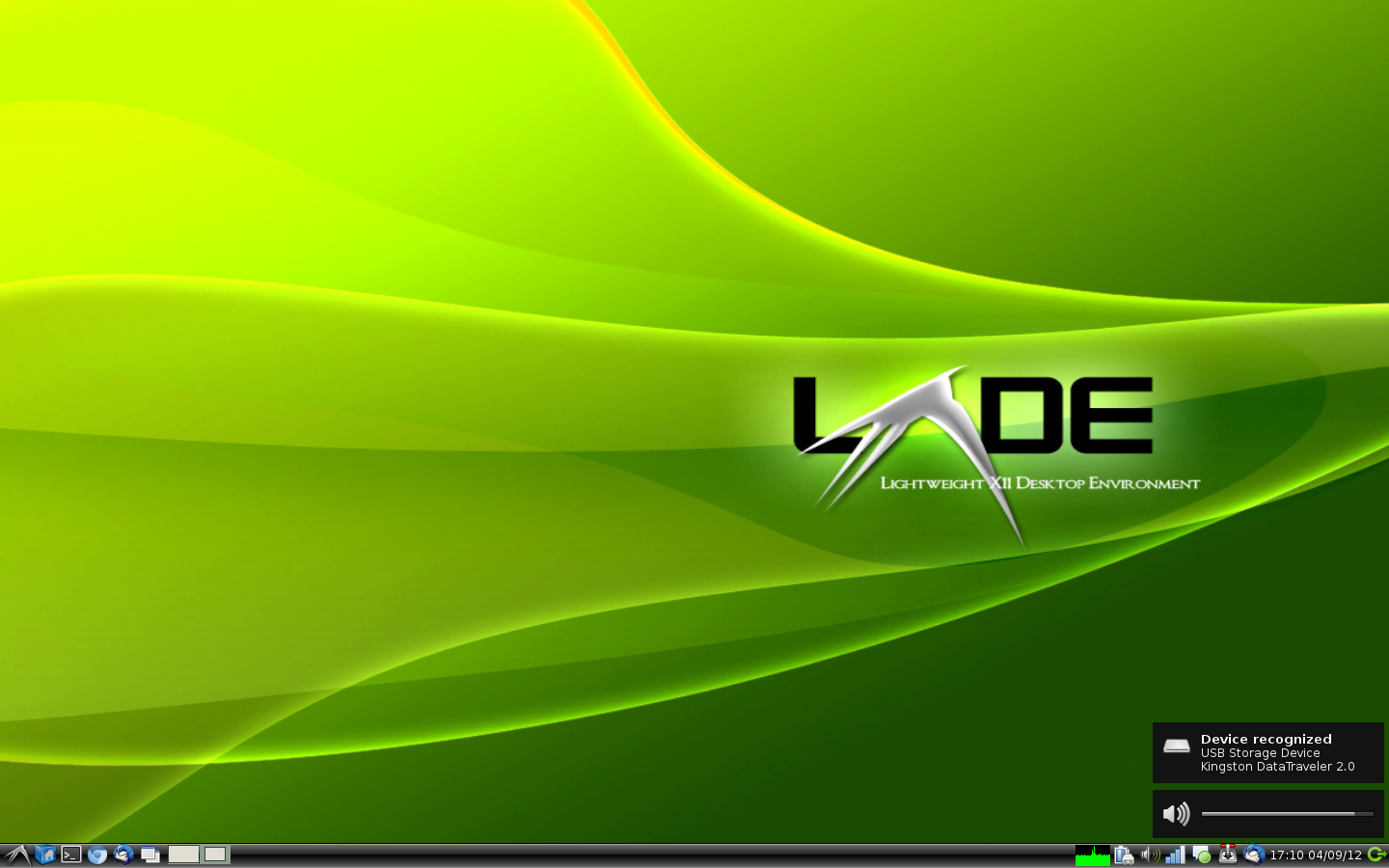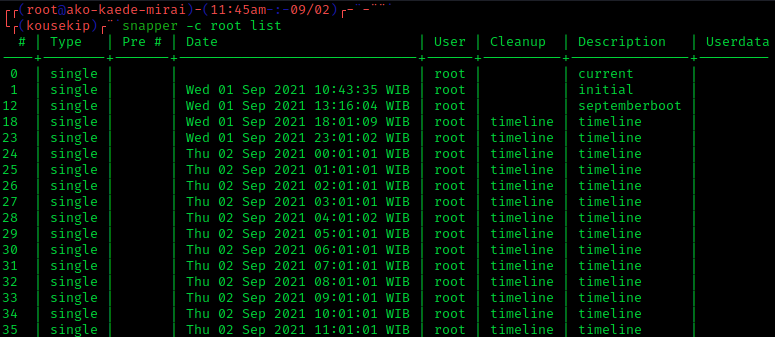|
Foresight Linux
Foresight Linux was a Linux distribution comprising free and proprietary software with the goal of showcasing the latest in Linux desktop technologies. Foresight is developed by the Foresight community and is based on rPath, it also follows a rolling release cycle, instead of a time-based release schedule. The project announced it was shutting down at the end of May 2015. History Foresight was created by Ken VanDine as a Linux distribution to showcase the most current releases of GNOME while working on the GNOME Marketing team. Since then it has undergone change through generally minor revisions (via rolling release). This is in contrast to the system of major changes with each version number employed by many other distributions. However, there have been occasional major changes, most notably the transition from Foresight 1.x to Foresight 2. Along the way several original deficiencies have been cured as well, among them the lack of 64 bit support, which was introduced in Foresig ... [...More Info...] [...Related Items...] OR: [Wikipedia] [Google] [Baidu] |
Foresight Linux Logo 2
Foresight most commonly refers to: * Foresight (psychology), the ability to predict or plan for the future * Mental time travel or episodic foresight, the ability to reconstruct events from the past and imagine future events * Precognition, a claimed psychic ability to see events in the future Foresight or fore sight may also refer to: * Foresight (forecasting journal), ''Foresight'' (forecasting journal), a publication on business forecasting, by the International Institute of Forecasters * Foresight (futures studies), European planning mechanism for public policy * Foresight (futures studies journal), ''Foresight'' (futures studies journal), an international bimonthly journal founded 1999 * Fore sight (surveying), short for "fore sight reading", a reading from a leveling staff when using a surveyor's level * Foresight Institute, an American nonprofit organization studying molecular nanotechnology * Foresight Linux, computer operating system * Foresight magazine, a Japanese magazin ... [...More Info...] [...Related Items...] OR: [Wikipedia] [Google] [Baidu] |
RPath
rPath, Inc. was a technology company based in Raleigh, North Carolina that developed technology to automate the process of constructing (or packaging), deploying and updating software.Craig, Julie. "Cloud Coalition: rPath, newScale, and Eucalyptus Systems Partner on Self-Service Public and Private Cloud". Enterprise Management Associates, 2010, p. 2. rPath modeled and managed components and dependencies under version control. It acted as a model-driven and version-controlled repository and software distribution hub.Chalmers, Rachel. "Eucalyptus Systems, newScale and rPath join to build integrated cloud on-ramp". The 451 Group, 2010, p. 1. In November, 2012, rPath was acquired by SAS Institute. Shortly after this, rPath Linux was discontinued. History rPath was founded in April 2005, and was originally known for packaging applications as virtual appliances for its independent software vendors (ISVs) and end-user customers. It was co-founded by Erik Troan, co-author of Red ... [...More Info...] [...Related Items...] OR: [Wikipedia] [Google] [Baidu] |
X86-64 Linux Distributions
x86-64 (also known as x64, x86_64, AMD64, and Intel 64) is a 64-bit version of the x86 instruction set, first released in 1999. It introduced two new modes of operation, 64-bit mode and compatibility mode, along with a new 4-level paging mode. With 64-bit mode and the new paging mode, it supports vastly larger amounts of virtual memory and physical memory than was possible on its 32-bit predecessors, allowing programs to store larger amounts of data in memory. x86-64 also expands general-purpose registers to 64-bit, and expands the number of them from 8 (some of which had limited or fixed functionality, e.g. for stack management) to 16 (fully general), and provides numerous other enhancements. Floating-point arithmetic is supported via mandatory SSE2-like instructions, and x87/MMX style registers are generally not used (but still available even in 64-bit mode); instead, a set of 16 vector registers, 128 bits each, is used. (Each register can store one or two double-preci ... [...More Info...] [...Related Items...] OR: [Wikipedia] [Google] [Baidu] |
ISO Image
An optical disc image (or ISO image, from the ISO 9660 file system used with CD-ROM media) is a disk image that contains everything that would be written to an optical disc, disk sector by disc sector, including the optical disc file system. ISO images are expected to contain the binary image of an optical media file system (usually ISO 9660 and its extensions or UDF), including the data in its files in binary format, copied exactly as they were stored on the disc. The data inside the ISO image will be structured according to the file system that was used on the optical disc from which it was created. ISO images can be created from optical discs by disk imaging software, or from a collection of files by optical disc authoring software, or from a different disk image file by means of conversion. Software distributed on bootable discs is often available for download in ISO image format. And like any other ISO image, it may be written to an optical disc such as CD, DVD and Blu- ... [...More Info...] [...Related Items...] OR: [Wikipedia] [Google] [Baidu] |
Snapshot (computer Storage)
In computer systems, a snapshot is the state of a system at a particular point in time. The term was coined as an analogy to that in photography. It can refer to an actual copy of the state of a system or to a capability provided by certain systems. Rationale A full backup of a large data set may take a long time to complete. On multi-tasking or multi-user systems, there may be writes to that data while it is being backed up. This prevents the backup from being atomic and introduces a version skew that may result in data corruption. For example, if a user moves a file into a directory that has already been backed up, then that file would be completely missing on the backup media, since the backup operation had already taken place before the addition of the file. Version skew may also cause corruption with files which change their size or contents underfoot while being read. One approach to safely backing up live data is to temporarily disable write access to data during t ... [...More Info...] [...Related Items...] OR: [Wikipedia] [Google] [Baidu] |
RPath
rPath, Inc. was a technology company based in Raleigh, North Carolina that developed technology to automate the process of constructing (or packaging), deploying and updating software.Craig, Julie. "Cloud Coalition: rPath, newScale, and Eucalyptus Systems Partner on Self-Service Public and Private Cloud". Enterprise Management Associates, 2010, p. 2. rPath modeled and managed components and dependencies under version control. It acted as a model-driven and version-controlled repository and software distribution hub.Chalmers, Rachel. "Eucalyptus Systems, newScale and rPath join to build integrated cloud on-ramp". The 451 Group, 2010, p. 1. In November, 2012, rPath was acquired by SAS Institute. Shortly after this, rPath Linux was discontinued. History rPath was founded in April 2005, and was originally known for packaging applications as virtual appliances for its independent software vendors (ISVs) and end-user customers. It was co-founded by Erik Troan, co-author of Red ... [...More Info...] [...Related Items...] OR: [Wikipedia] [Google] [Baidu] |
Software Repository
A software repository, or repo for short, is a storage location for software packages. Often a table of contents is also stored, along with metadata. A software repository is typically managed by source control or repository managers. Package managers allow automatically installing and updating repositories (sometimes called "packages"). Overview Many software publishers and other organizations maintain servers on the Internet for this purpose, either free of charge or for a subscription fee. Repositories may be solely for particular programs, such as CPAN for the Perl programming language, or for an entire operating system. Operators of such repositories typically provide a package management system, tools intended to search for, install and otherwise manipulate software packages from the repositories. For example, many Linux distributions use Advanced Packaging Tool (APT), commonly found in Debian based distributions, or yum found in Red Hat based distributions. There ... [...More Info...] [...Related Items...] OR: [Wikipedia] [Google] [Baidu] |
Dpkg
dpkg is the software at the base of the package management system in the free operating system Debian and its numerous derivatives. dpkg is used to install, remove, and provide information about .deb packages. dpkg (Debian Package) itself is a low-level tool. APT (Advanced Package Tool), a higher-level tool, is more commonly used than dpkg as it can fetch packages from remote locations and deal with complex package relations, such as dependency resolution. Frontends for APT, like aptitude (ncurses) and synaptic (GTK), are used for their friendlier interfaces. The Debian package "dpkg" provides the dpkg program, as well as several other programs necessary for run-time functioning of the packaging system, including dpkg-deb, dpkg-split, dpkg-query, dpkg-statoverride, dpkg-divert and dpkg-trigger. It also includes the programs such as update-alternatives and start-stop-daemon. The install-info program used to be included as well, but was later removed as it is now developed and d ... [...More Info...] [...Related Items...] OR: [Wikipedia] [Google] [Baidu] |
RPM Package Manager
RPM Package Manager (RPM) (originally Red Hat Package Manager, now a recursive acronym) is a free and open-source package management system. The name RPM refers to the file format and the package manager program itself. RPM was intended primarily for Linux distributions; the file format is the baseline package format of the Linux Standard Base. Although it was created for use in Red Hat Linux, RPM is now used in many Linux distributions such as PCLinuxOS, Fedora, AlmaLinux, CentOS, openSUSE, OpenMandriva and Oracle Linux. It has also been ported to some other operating systems, such as Novell NetWare (as of version 6.5 SP3), IBM's AIX (as of version 4), IBM i, and ArcaOS. An RPM package can contain an arbitrary set of files. Most RPM files are “binary RPMs” (or BRPMs) containing the compiled version of some software. There are also “source RPMs” (or SRPMs) containing the source code used to build a binary package. These have an appropriate tag in the file header tha ... [...More Info...] [...Related Items...] OR: [Wikipedia] [Google] [Baidu] |
Banshee (media Player)
Banshee is a cross-platform open-source media player, called Sonance until 2005. Built upon Mono and Gtk#, it used the GStreamer multimedia platform for encoding, and decoding various media formats, including Ogg Vorbis, MP3 and FLAC. Banshee can play and import audio CDs and supports many portable media players, including Apple's iPod, Android devices and Creative's ZEN players. Other features include Last.fm integration, album artwork fetching, smart playlists and podcast support. Banshee is released under the terms of the MIT License. Stable versions are available for many Linux distributions, as well as a beta preview for OS X and an alpha preview for Windows. Banshee was the default music player for a year in Ubuntu and for some time in Linux Mint, but was later replaced by Rhythmbox in both distributions. Banshee uses the SQLite database library. Plugins Banshee's plugin-capable architecture makes the software extensible and customizable. stable plugins includ ... [...More Info...] [...Related Items...] OR: [Wikipedia] [Google] [Baidu] |


